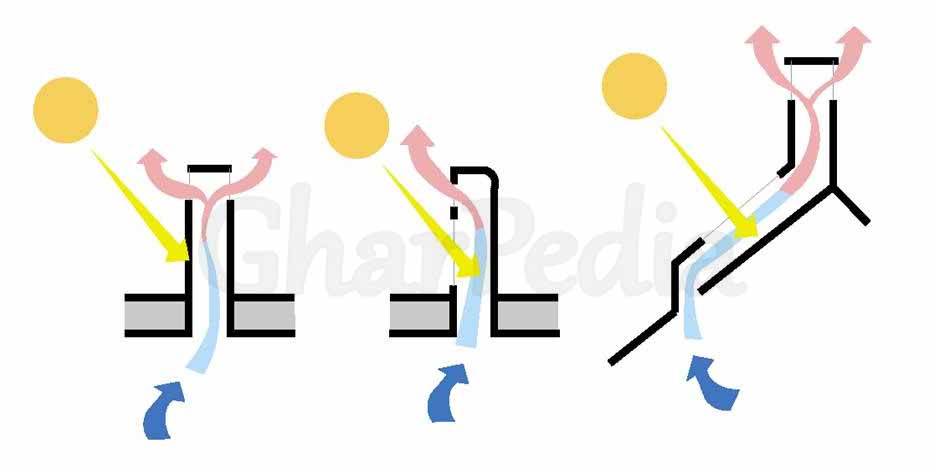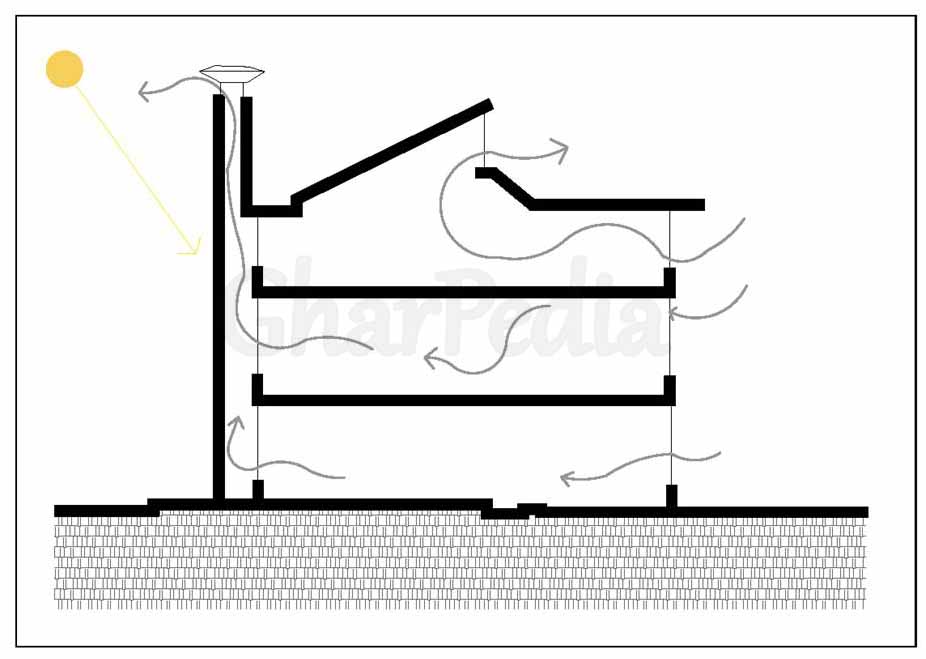The stack effect happens, when warm air moves or flow upwards in the building.
In summer, the warm air rises because it is lighter than cold air. So when it rises, it escapes out of the upper levels of the building through ventilation openings, windows or leakages. The rising warm air reduces the pressure at the base of the building, forcing cold air to infiltrate through either open doors, windows, or other openings and leakage in lower levels of the building.

The stack effect generally causes air infiltration.
OR
In other words, it is a convection effect arising from temperature or vapour pressure difference (or both) between outside and inside of the room and the difference of height between the outlet and inlet openings.

How does Well Stack Ventilation Work?
For ventilation, a high ceiling is required. The effectiveness of this type of natural ventilation depends on the size of the building. If the building ceiling is not high, warm air actually will not move away from the inhabitants.
Other factors such as, the amount of heat in the building, shape of the building itself, the orientation of the building whether it is wind ward side face or not, etc.
In short, stack effect ventilation can make a huge difference in the facility. By directing warm air away from the building personnel, escape through the roof, we are giving a huge impact on the interior conditions of the building.

Pros & Cons of Stack Ventilation:
Pros:
- It does not require blowing air.
- Relies on the natural elements like, temperature & Gravity.
- It does not involve operating costs & cooling is inexpensive.
- It does not consume energy.
Cons:
- It cannot completely control temperature.
- The impact depends on exterior temperatures.
- Can bring polluted air into buildings.





